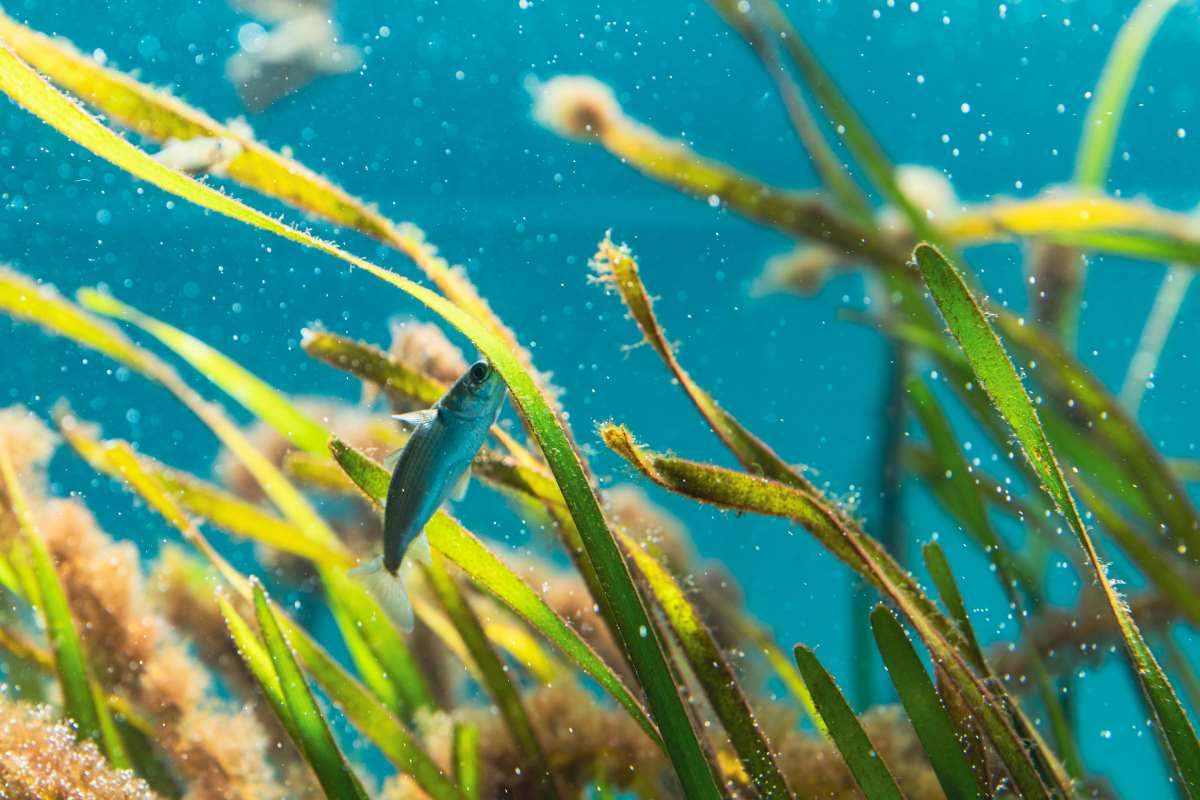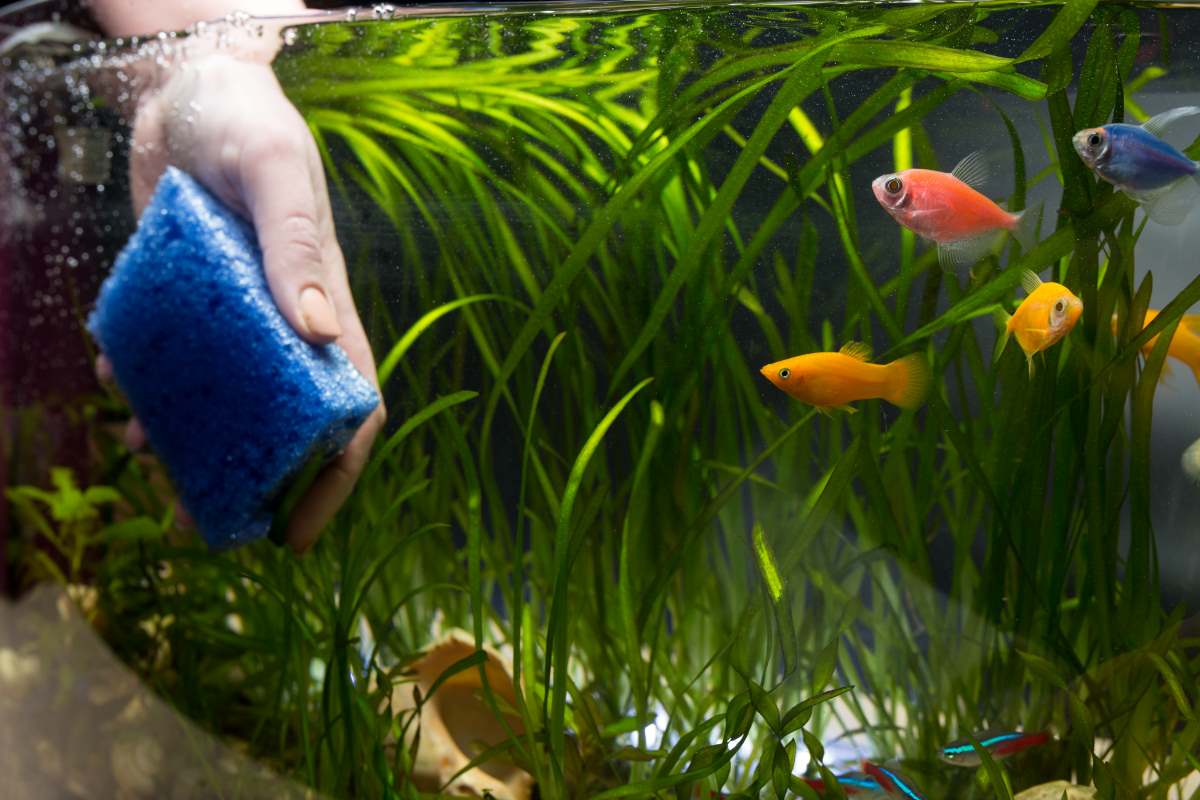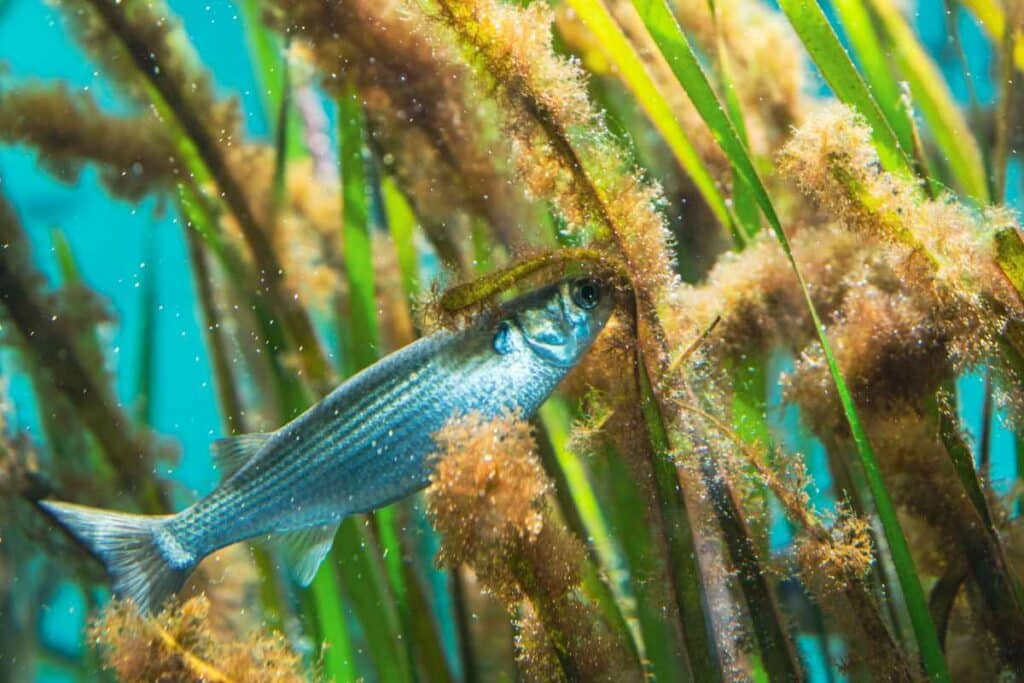the essentials in brief
The tasks of diatoms include the production of oxygen, the food base for aquatic organisms and participation in the global carbon cycle. More on this…
Diatoms are eaten by various aquatic organisms such as mussels, snails and plankton. To care for diatoms…
The time it takes for diatoms to disappear can vary depending on environmental conditions, but they can regress within weeks to months.
diatoms, also called diatoms, are fascinating microorganisms that play an important role in aquatic ecosystems. Their delicate, shiny coatings on surfaces are not only an aesthetic element, but also contribute to the ecological balance. From water quality to aquarium design, diatoms offer a variety of aspects that illustrate their importance and beauty.
In this article you will learn what function diatoms have in the aquarium, how you can care for and promote them and how you can use them well in the design of your aquarium.
The function of diatoms in the aquarium

Diatoms, also known as diatoms, play a diverse and important role in the aquarium. They are not only fascinating microorganisms, but also fulfill important functions in the aquatic ecosystem. Here are some of the top reasons why diatoms are important in the aquarium:
- Part of the food web: Diatoms are an important food source for many aquatic organisms, including small crustaceans (copepods), insect larvae and various larval stages of fish. They form the basis of the food chain and thus support the entire ecological balance in the aquarium.
- Oxygen production: Like all photosynthetic organisms, diatoms also produce oxygen through photosynthesis. This contributes to the oxygenation of the water, which is essential for the survival and health of the aquarium inhabitants.
- Nutrient absorption and regulation: Diatoms use nutrients such as nitrogen and phosphorus from the water to grow. Through this process, they help regulate nutrients in the aquarium by absorbing excess nutrients, thereby reducing the risk of algal blooms.
- Biological filtering: Diatoms can act as natural biological filters that help remove pollutants and impurities from the water. They can help improve water quality by breaking down suspended matter and organic matter.
- Ecological Stability: Healthy diatom growth can help create a stable ecological environment. They support the micro-ecosystem by attracting a variety of organisms. These in turn contribute to a balanced food web.
- Formation of habitats: Diatoms can serve as adhesive surfaces for useful microorganisms and microbes that have a positive effect on water quality and biological balance.
Additional information: diatoms can be an aesthetically pleasing addition to the aquarium. Their fine coating on the surfaces gives the aquarium a natural and elegant look that is reminiscent of the underwater world of lakes and rivers.
Care and promotion of diatoms
Caring for and promoting diatoms in the aquarium is a fascinating process that requires a careful balance of various factors to ensure healthy and aesthetically pleasing growth. Diatoms, also known as diatoms, can be a valuable addition to the aquatic ecosystem by contributing to the food chain, oxygen production and nutrient regulation.
A fundamental aspect of cultivating diatoms is the Lighting. These microorganisms need light to gain energy through photosynthesis and to grow. It is important to ensure the right duration and intensity of lighting to create optimal conditions for the growth of the diatoms. However, excessive lighting should be avoided as it can lead to overgrowth. A balance of light and darkness is therefore crucial.
The availability of nutrients also plays a crucial role for the diatoms. These organisms use nutrients such as nitrogen, phosphorus and silicon from the water to grow. A balance of these nutrients is necessary to promote healthy growth. Regular water changes and the use of high-quality aquarium fertilizer can ensure an adequate supply of nutrients.
Another important factor is the water quality. Clean water is not only of great importance for the diatoms, but also for other aquarium inhabitants. Regular control and maintenance of water parameters such as pH, hardness and ammonia content are necessary to ensure optimal conditions for the growth of the diatoms.
A well established and balanced aquarium is also conducive to the growth of diatoms. A stable nutrient balance and a healthy bacterial population in the substrate and in the water promote the growth of diatoms.
The control of diatom growth iis important to prevent excessive proliferation and turbidity of the water. In the event of excessive diatom growth, measures such as reducing the lighting time, optimizing the nutrient supply and regularly cleaning the surfaces can be taken.
Note: Caring for diatoms requires patience and observation. It can take time to achieve the optimal balance of lighting, nutrients, and water quality. Continuous fine-tuning and adjustment of conditions is necessary to promote healthy and aesthetically pleasing diatom growth.

Diatoms in aquarium design
The aesthetic design of an aquarium with diatoms can be an appealing way to bring natural elegance and tranquility to the underwater habitat. Diatoms are characterized by their delicate, shiny coatings on surfaces and can be a fascinating visual element in your aquarium. Here are some detailed tips on how to attractively integrate diatoms into your aquarium:
- Create a natural atmosphere: Diatoms can help create an authentic underwater world. Use them specifically on decorative elements such as stones, roots or other structures to create a realistic, natural atmosphere. This gives your aquarium depth and makes it appear alive.
- Put the diatoms in the limelight: Experiment with different arrangements and placements of the diatoms to create fascinating visual effects. You can create soft patterns or shapes that draw the eye and create an aesthetic impact.
- Light: Lighting plays a crucial role in bringing out the beauty of diatoms. Play with different lighting times and intensities to bring out the shine of the diatoms and emphasize their fine structures.
- Use contrasts: Diatoms can contrast with other elements in the aquarium, such as lively plants or colorful fish. Targeted contrasts create visual depth and dynamics that enrich the overall picture.
- Lifelike replica: Use diatoms to recreate specific underwater environments. For example, you can create a river landscape by placing diatom toppings on rocks, or imitate a riparian zone by placing them on submerged roots.
- Focused design: Use diatoms specifically as an eye-catcher or accent in your aquarium. Place them in strategic places to draw attention to specific areas and create an interesting visual hierarchy.
- Patience and Control: Keep an eye on the growth of the diatoms and control it if necessary. Overgrowth can affect aesthetics, so regular trimming and cleaning is necessary.
- Willingness to experiment: Let your creativity run free and try out different designs and arrangements. The aquarium is your canvas where you can play with colors, textures and shapes to create your own unique underwater landscape.
- Harmonic integration: Make sure that the diatoms fit harmoniously into the overall composition of your aquarium. The integration should not appear forced, but create natural transitions and connections to other elements.
- Changing beauty: Keep in mind that diatom growth can vary over time. Their appearance can change depending on factors such as light, nutrients and water quality. Enjoy the evolving beauty and adjust your design if necessary.
Note: Designing an aquarium with diatoms requires a mixture of creative vision and practical implementation. By using the unique properties of diatoms and cleverly incorporating them into the overall design, you can create a fascinating and aesthetic underwater world that reflects the natural beauty of rivers and lakes.
For an aesthetic aquarium
In summary, it can be said that diatoms play a fascinating and varied role both in nature and in aquaristics. Their importance ranges from ecological functions such as nutrient regulation and oxygen production to the aesthetic enrichment of aquariums. The subtle beauty of their lustrous coverings lends a natural elegance to underwater life, while their ecological role helps stabilize aquatic ecosystems.
Caring for diatoms requires attention, patience and delicacy to encourage healthy growth while preventing overgrowth. The conscious integration of diatoms into the aquarium design offers the opportunity to create a unique visual experience that reflects the natural beauty of the water bodies in an impressive way.


